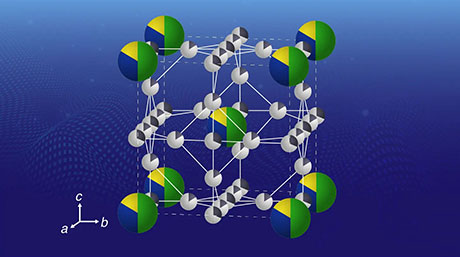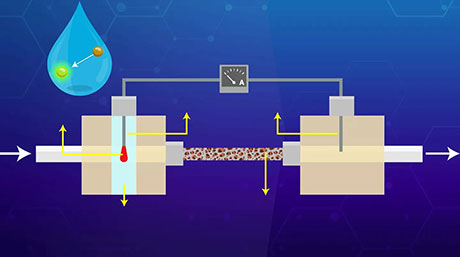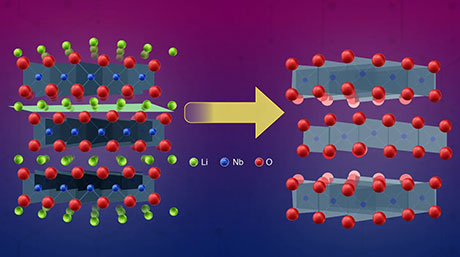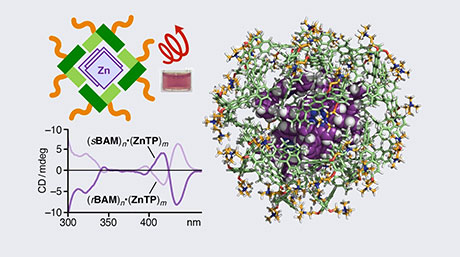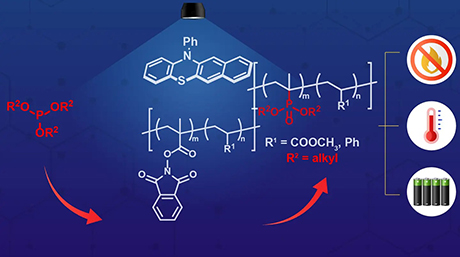Chemical Science and Engineering News
Building Blocks for the Future: Enantioselective [2+2+1] Cycloaddition Reactions with Rhodium Catalysis
A rhodium-catalyzed [2+2+1] cycloaddition reaction expands the possibilities for creating complex organic molecule
Using cycloalkenes, acetylenecarboxylates, and terminal alkynes, researchers at Tokyo Institute of Technology (Tokyo Tech) have successfully produced chiral 3-methylenecyclopent-1-ene derivatives with high selectivity. This reaction is an example of a catalytic intermolecular [2+2+1] cycloaddition reaction where unsaturated compounds are combined to produce cyclic structures. Previously, achieving products with the desired chirality with this type of reaction was challenging. This breakthrough now provides valuable building blocks with broad applications, including in drug discovery.
![Efficient [2+2+1] Cycloaddition: Access to Chiral Five-Membered Carbocycles](/cap/eng/news/img/news_066476_01.jpg)
Cycloaddition reactions are an efficient strategy for constructing cyclic compounds that are important building blocks for other chemicals. In these processes, π-electrons from different unsaturated molecules, such as alkenes, alkynes, or dienes accommodate to form new cyclic structures in a single step. π-electrons are those responsible for the π-bonds in double and triple bonds. In a double bond, one of the C-C bonds is a π-bond, while in a triple bond, two of the C-C bonds are π-bonds.
During these reactions, the π-electrons rearrange to form new σ-bonds, resulting in the formation of ring structures. For example, in a [2+2+2] cycloaddition, three components each with two π-electrons combine to form a six-membered ring. In a [2+2+1] cycloaddition, two components with two π-electrons each, along with an additional component acting as a single carbon unit, combine to form a five-membered ring. These reactions are highly efficient because most of the reactants are converted into the final product. While [2+2+2] reactions are well-established, producing compounds with the desired chirality using [2+2+1] reactions is challenging.
In a study published in the journal Nature Synthesis![]() , a research team led by Professor Ken Tanaka from Tokyo Institute of Technology developed a rhodium (Rh)-catalyzed enantioselective [2+2+1] cycloaddition reaction. The reaction uses three different 2π-components—cycloalkenes, acetylenecarboxylates, and terminal alkynes—to produce chiral 3-methylenecyclopent-1-ene derivatives with exceptional selectivity.
, a research team led by Professor Ken Tanaka from Tokyo Institute of Technology developed a rhodium (Rh)-catalyzed enantioselective [2+2+1] cycloaddition reaction. The reaction uses three different 2π-components—cycloalkenes, acetylenecarboxylates, and terminal alkynes—to produce chiral 3-methylenecyclopent-1-ene derivatives with exceptional selectivity.
"The ultimate goal for intermolecular cycloaddition is the catalytic selectivity control using three different 2π-components", says Tanaka. "As a catalytic version, we developed the sole example of the enantioselective intermolecular cross-[2+2+1] cycloaddition."
Studies on the reaction mechanism showed that it begins with the coordination of cycloalkenes and acetylenedicarboxylates to the cationic Rh(I) catalyst, forming a rhodacyclopentene intermediate. The terminal alkyne then reacts with this intermediate to generate a vinylidene intermediate. Following this, a reductive elimination step produces the final cycloadduct while regenerating the Rh(I) catalyst.
One of the major advantages of this method is its compatibility with a diverse range of substrates. The researchers used oxabenzonorbornadiene and norbornene derivatives as cycloalkenes, di-tert-butyl and dimethyl acetylenedicarboxylates, and terminal alkynes like 1-dodecyne, phenylacetylene, and silylacetylenes. With phosphine ligands like (R)-BINAP and (R)-Segphos, they could carefully control the enantioselectivity and yield, achieving E isomers of 3-methylenecyclopent-1-ene derivatives with enantiomeric excess values ranging from 94% to over 99%.
The 3-methylenecyclopent-1-ene derivatives are incredibly useful building blocks for creating many different types of molecules. For instance, by adding hydrogen to these molecules (hydrogenation), the researchers produced multicyclic cyclopentenes. Epoxidation produced multicyclic epoxides, which could be further converted into a variety of hydroperoxides, alcohols and aldehydes.
With its vast potential to produce a diverse range of 3D compounds which are otherwise challenging to synthesize, this catalytic approach paves the way for producing novel compounds with diverse applications. "The present [2+2+1] cycloaddition and subsequent transformations provide access to otherwise inaccessible three-dimensional (3D) compounds that are attractive for drug discovery research," says Tanaka.
- Reference
| Authors : | Kaito Shibahara, Yoshihito Kayaki, Kairi Yamashiro, Yuki Nagashima, Kohei Fujii and Ken Tanaka |
|---|---|
| Title : | Rh-catalysed enantioselective [2+2+1] cycloaddition reactions using three different 2π-components |
| Journal : | Nature Synthesis |
| DOI : | 10.1038/s44160-024-00604-7 |
| Affiliations : |
Department of Chemical Science and Engineering, Tokyo Institute of Technology, Japan |
|
* Corresponding authors' emails: kayaki@cap.mac.titech.ac.jp (Yoshihito Kayaki); ktanaka@apc.titech.ac.jp (Ken Tanaka) |
|
- Transforming Inexpensive Quinolines into Complex Drug Candidates | Tokyo Tech News
- Synthesizing π-Extended Carbohelicene-Based Circularly Polarized Luminescence Emitters | Tokyo Tech News
- An Improved, Visible Light-Harvesting Catalyst to Speed Up Reactions | Tokyo Tech News
- New Horizons for Organoboron and Organosilicon Chemistry with Triple Elementalization | Tokyo Tech News
- Less Is More: "Reduction" Allows for Cleaner and More Efficient Catalytic Reactions | Tokyo Tech News
- Touched by Light: Photoexcited Stannyl Anions Are Great for Producing Organotin Compounds | Tokyo Tech News
- 2023 Tokyo Tech Challenging Research Award | Tokyo Tech News
- Ken Tanaka | Researcher Finder - Tokyo Tech STAR Search
- Yoshihito Kayaki | Researcher Finder - Tokyo Tech STAR Search
- Ken Tanaka Laboratory
- Ken Tanaka Laboratory | School of Materials and Chemical Technology Laboratory Search Site
- Chemical Science and Engineering Graduate Major|Education|Department of Chemical Science and Engineering, School of Materials and Chemical Technology
- Chemical Science and Engineering Undergraduate Major|Education|Department of Chemical Science and Engineering, School of Materials and Chemical Technology
- Latest Research News
School of Materials and Chemical Technology
—Encompassing the Disciplines of Science—
Information on School of Materials and Chemical Technology inaugurated in April 2016
Further Information
Professor Ken Tanaka
School of Materials and Chemical Technology, Tokyo Institute of Technology
Email tanaka.k.cg@m.titech.ac.jp
Assistant Professor Yoshihito Kayaki
School of Materials and Chemical Technology, Tokyo Institute of Technology

